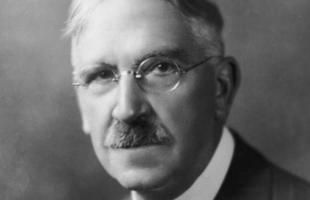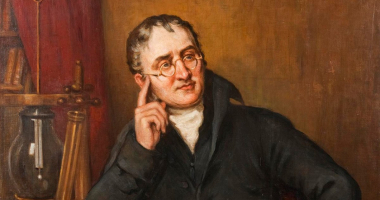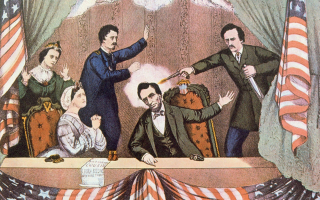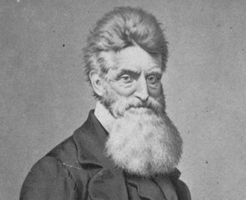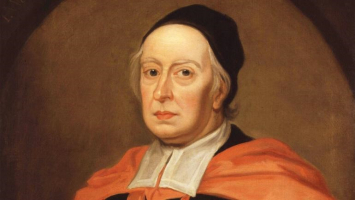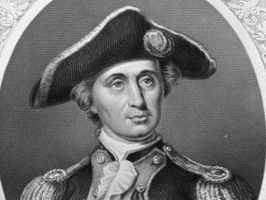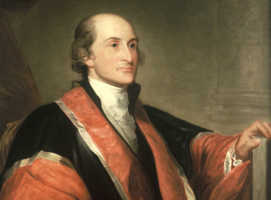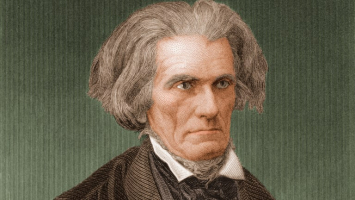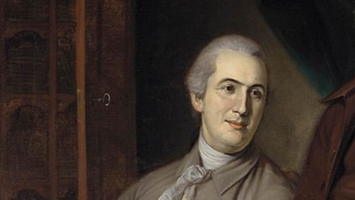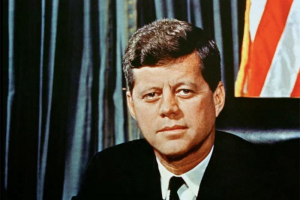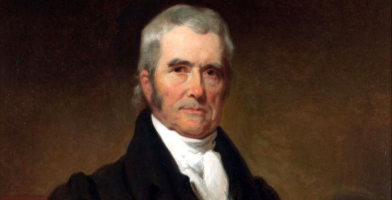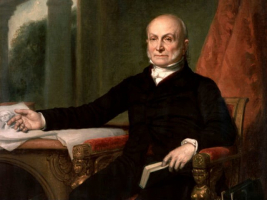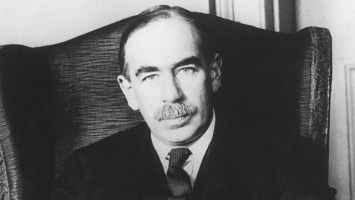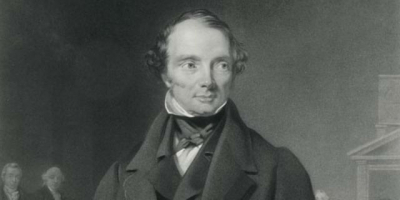Top 10 Interesting Facts about John Davision Rockefeller
John Davison Rockefeller Sr. (July 8, 1839 - May 23, 1937) was a business magnate and philanthropist from the United States. He is usually regarded as the ... read more...wealthiest American of all time and the wealthiest individual in modern history. Here are the 10 interesting facts about John Davison Rockefeller.
-
One of the interesting facts about John Davison Rockefeller is that his father was a con artist. Rockefeller was the second child of con artist William Avery "Bill" Rockefeller and Eliza Davison in Richford, New York. He had four younger siblings: William Jr., Mary, and twins Franklin (Frank) and Frances, as well as an older sister named Lucy. His father was of English and German ancestry, and his mother was of Ulster Scot descent. He maintained a nomadic existence, unencumbered by conventional morality, and only seldom returned to his family. Bill was infamous for carrying out schemes throughout his life.
William Avery "Devil Bill" Rockefeller Sr. (November 13, 1810 - May 11, 1906) was an American merchant, lumberman, herbalist, salesperson, and scam artist known as Dr. William Levingston. He worked as a lumberjack and then as a traveling salesman, posing as a "botanic physician" and selling elixirs. He was known to buy and sell horses, and he was also reported to have purchased a barge load of salt in Syracuse at one point. Land speculation was another form of business for him, and selling elixirs kept him in cash and helped him find land opportunities. He gave money to farmers at 12% interest, but he wanted to lend to farmers who couldn't pay so that he could foreclose and take over the farms.
William Avery "Devil Bill" Rockefeller had previously used the alias Levingston in Park River, North Dakota. He died on May 11, 1906, at the age of 95, in Freeport, Illinois. He was laid to rest in the Oakland Cemetery. John D. Rockefeller never publicly acknowledged his father's existence as a bigamist, and the expense of Bill's grave plaque was paid for by the estate of his second wife.
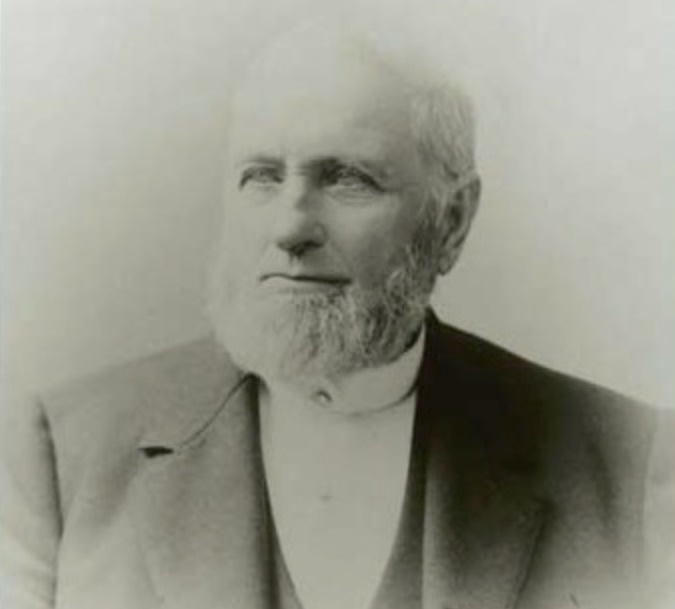
William Avery Rockefeller -Photo: en.wikipedia.org 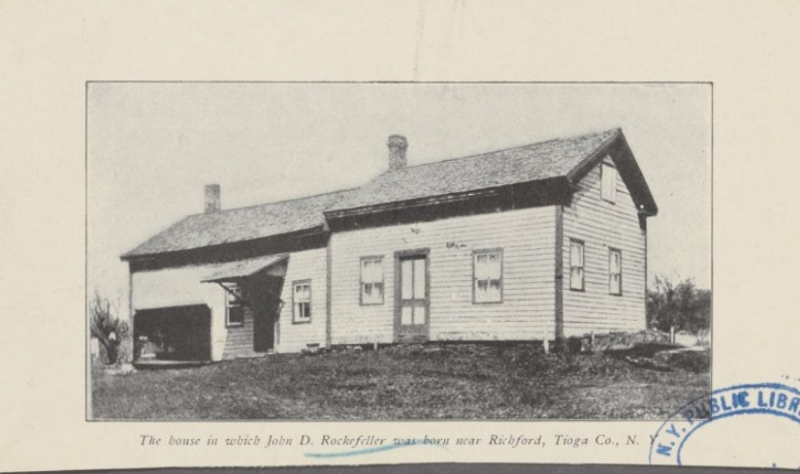
The house in which John D. Rockefeller was born -Photo: digitalcollections.nypl.org -
It is a fact that he was an assistant bookkeeper when he was 16. When Rockefeller was sixteen, he took his first job as an assistant bookkeeper for Hewitt & Tuttle, a small produce commission firm in Cleveland. He worked long hours and was fascinated by all the ways and processes of the workplace, as he subsequently recounted. He was very good at estimating transportation expenses, which came in handy later in his job. Negotiating with barge canal owners, ship captains, and freight agents was a big part of Rockefeller's job. During these conversations, he discovered that listed transportation rates that were thought to be set may be changed based on freight circumstances and scheduling, as well as through the application of rebates to preferred shippers. When Hewitt gave Rockefeller the task of collecting debts, he delegated it to him. Rockefeller depended on constant pestering rather than his father's tactic of presence to collect debts. For his three-month apprenticeship, Rockefeller was paid $16 per month. During his first year, he was paid $31 per month, which was later increased to $50 per month. His final year salary was $58 per month.
Rockefeller reportedly stated as a child that his two major goals in life were to make $100,000 (equal to $2.91 million in 2021 currency) and to live 100 years.
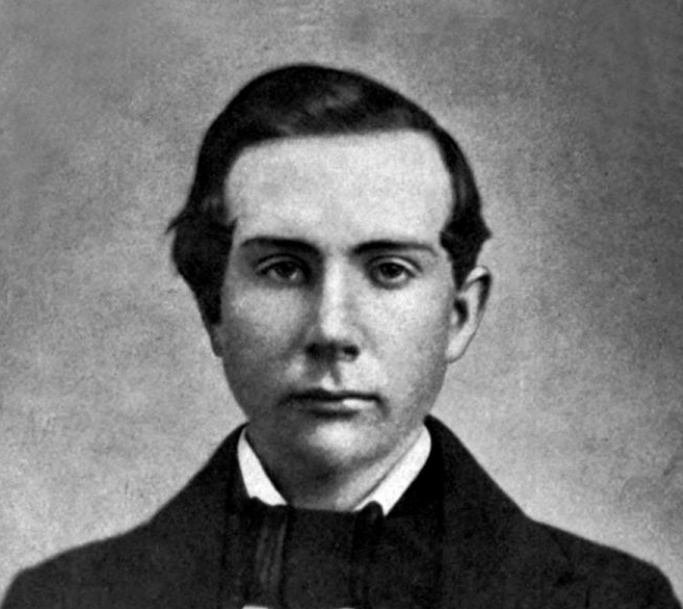
Rockefeller at age 18 -Photo: elleman.vn 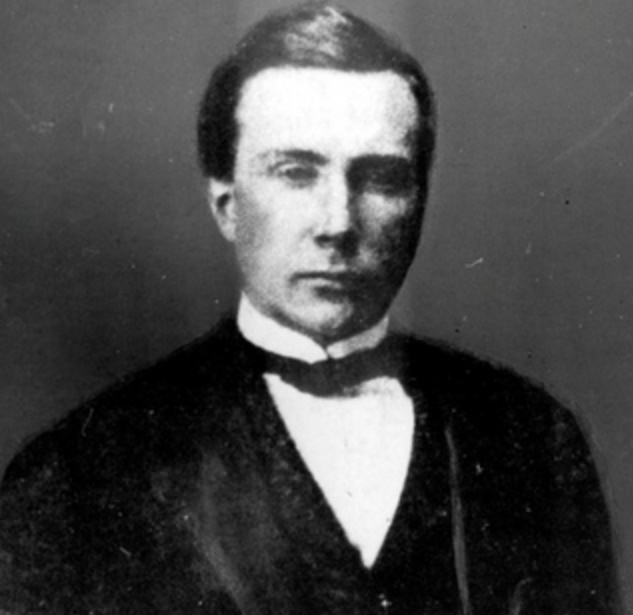
Photo: thehustle.co -
In 1859, Rockefeller started a produce commission business with a partner, Maurice B. Clark, and raised $4,000 in capital ($120,637 in 2021 dollars). Clark proposed the collaboration and offered $2,000 toward the goal. From there, Rockefeller progressed steadily in business, making money each year of his career. Clark & Rockefeller made $4,400 (on nearly half a million dollars in sales) and $17,000 in their first and second years of business, respectively, and their profits skyrocketed with the outbreak of the American Civil War when the Union Army called for massive amounts of food and supplies.
With the Civil War drawing to a conclusion and the prospect of wartime profits dwindling, Clark & Rockefeller turned their attention to crude oil refining. While his brother Frank was fighting in the Civil War, Rockefeller operated his business, and to avoid Civil War combat, he hired substitute soldiers. He contributed to the Union cause, as did many wealthy Northerners who want to avoid battle. "I wanted to go in the army and do my part," stated Rockefeller. "But it was simply out of the question. There was no one to take my place. We were in a new business, and if I had not stayed it must have stopped, and with so many dependent on it."
Rockefeller was an abolitionist who supported President Abraham Lincoln and the newly formed Republican Party. "God gave me money," he continued, and he didn't apologize for it. Following Methodist preacher John Wesley's credo, "get all you can, save all you can, and give all you can," he felt at rest and righteous. The federal government was subsidizing oil prices at the time, driving the price up from $.35 a barrel in 1862 to as much as $13.75. This resulted in a surplus of oil drilling, with thousands of speculators seeking to make a fortune. Most failed, but those who found oil didn't even have to be efficient. They would blow holes in the ground and collect as much oil as they could, frequently resulting in creeks and rivers running with waste oil instead of water.
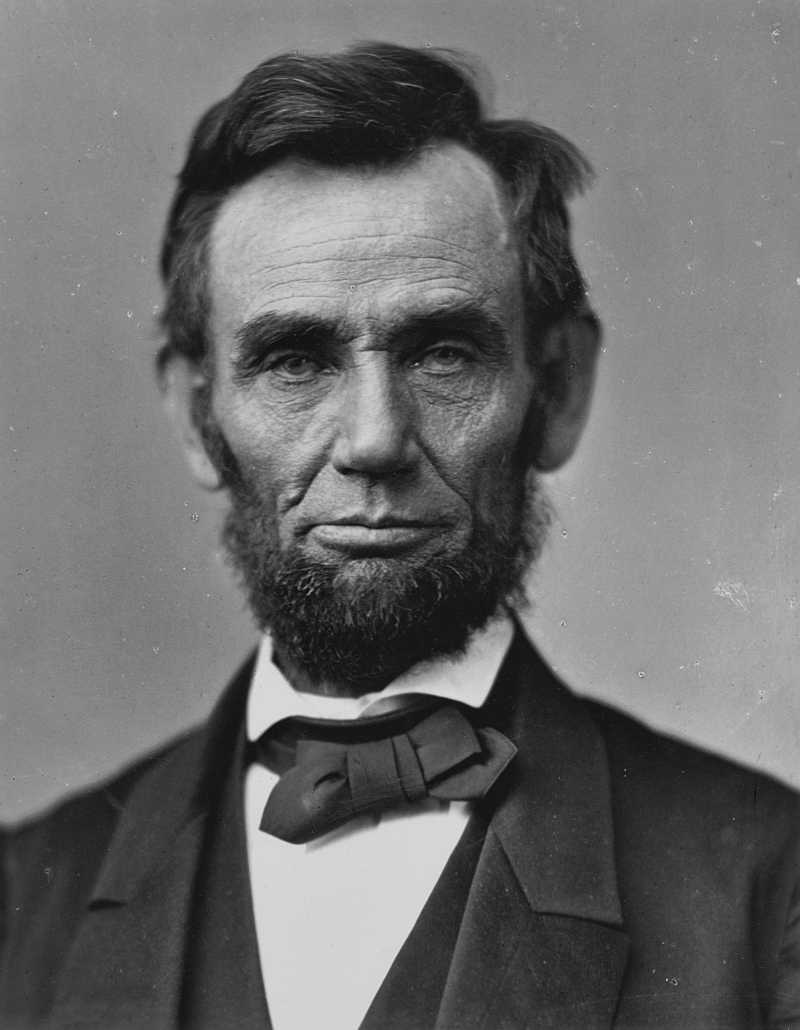
President Abraham Lincoln -Photo: vi.wikipedia.org 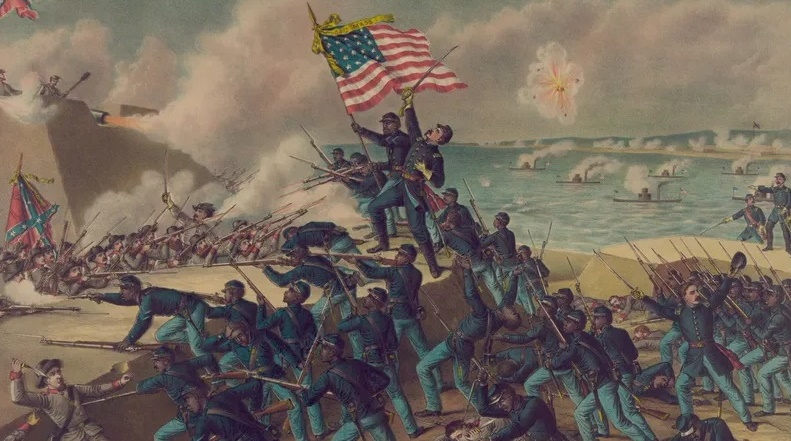
The Civil War -Photo: britannica.com -
One of the interesting facts about John Davison Rockefeller is that Cleveland was the first center of his oil empire. In 1866, John's brother, William Rockefeller Jr., built another refinery in Cleveland and welcomed John into the company. In 1867, Henry Morrison Flagler joined the firm, and the name Rockefeller, Andrews & Flagler was born. By 1868, with Rockefeller continuing to borrow and reinvest profits, limit costs, and use refinery waste, the corporation controlled two Cleveland refineries and a marketing subsidiary in New York, and it was the world's largest oil refinery. The Standard Oil Company was founded by Rockefeller, Andrews, and Flagler.
By the end of the American Civil War, Cleveland had become one of the country's five major refining centers (besides Pittsburgh, Pennsylvania, New York, and the region in northwestern Pennsylvania where most of the oil originated). By 1869, there was three times the kerosene refining capacity required to serve the market, and this capacity remained excessive for many years.
Rockefeller dissolved the partnership of Rockefeller, Andrews, and Flagler on January 10, 1870, establishing Standard Oil of Ohio. Rockefeller quickly built the company to become the most successful refiner in Ohio by applying his work ethic and efficiency. Similarly, it grew to become one of the country's leading shippers of oil and kerosene. The railroads competed fiercely for traffic, and in an attempt to form a cartel to control freight prices, they founded the South Improvement Company, which offered special deals to bulk customers such as Standard Oil outside of the major oil centers. As a high-volume shipper, the cartel provided special treatment, including not just hefty discounts/rebates of up to 50% on their goods, but also rebates for the shipment of competitor items.
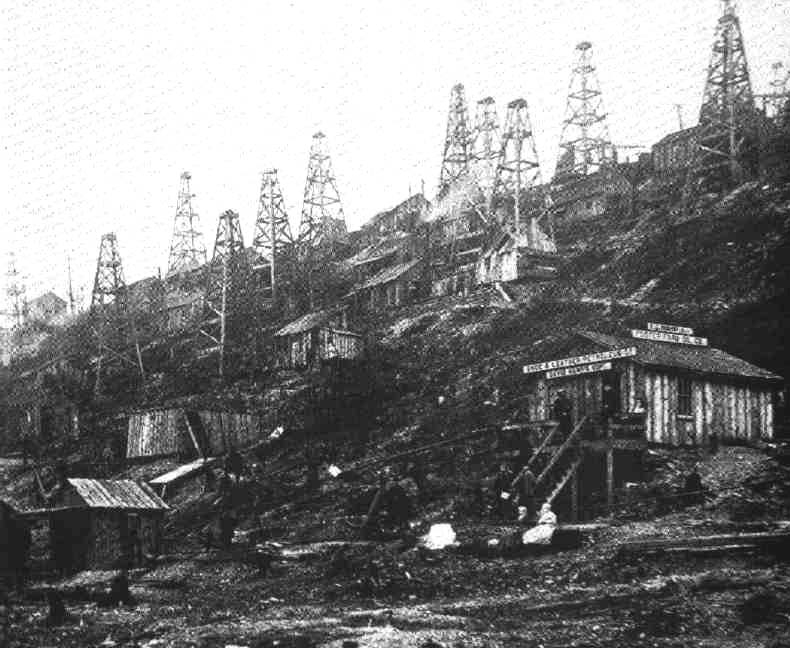
The Cleveland Massacre -Photo: waverlyhs.weebly.com 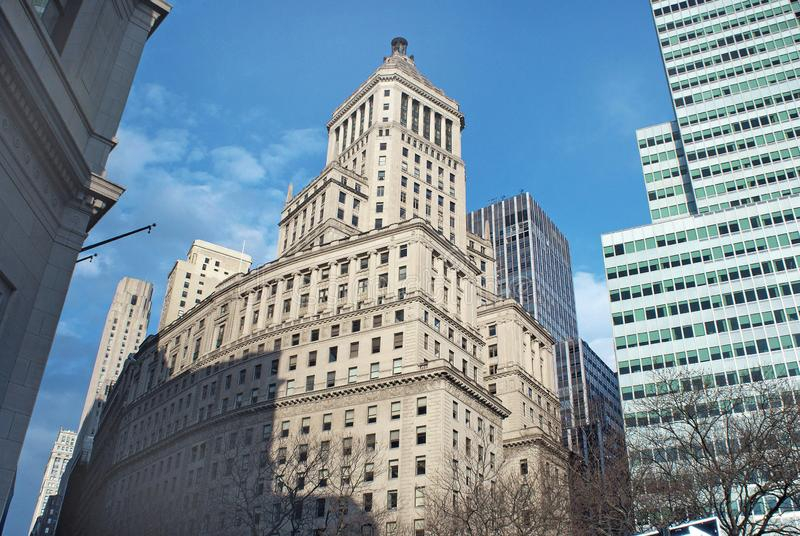
Standard Oil Building -Photo: dreamstime.com -
Laura Celestia "Cettie" Spelman Rockefeller (September 9, 1839 – March 12, 1915) was an abolitionist, philanthropist, and schoolteacher. John D. Rockefeller, the co-founder of Standard Oil, was her spouse. Laura Celestia Spelman was born in Wadsworth, Ohio, to parents Yankees Harvey Buell Spelman (1811-1881) and Lucy Henry (1818-1897). Harvey was an abolitionist involved in politics, the Congregationalist Church, and the Underground Railroad.
While attending accounting seminars in Cleveland, Lute and Spelman met John Davison Rockefeller. He was the eldest son of Eliza Davison and William Avery "Bill" Rockefeller (1810-1906). (1813-1889). She later returned to New England to attend Oread Institute with the intention of becoming a teacher. She married John in 1864 after returning to Ohio to teach. Spelman stayed engaged in the church (she joined Rockefeller's group, the Northern Baptists) and with her family after her marriage. She devoted more time to charities and her children once the family business, Standard Oil, took off.
Laura Spelman Rockefeller Memorial and Spelman College in Atlanta, Georgia, are named after her. Spelman College is an Atlanta-based private historically black women's liberal arts college. It is a member of the Atlanta University Center academic consortium. Spelman College was established in 1881 as the Atlanta Baptist Female Seminary and obtained its collegiate status in 1924, making it America's oldest private HBCU liberal arts college for women.
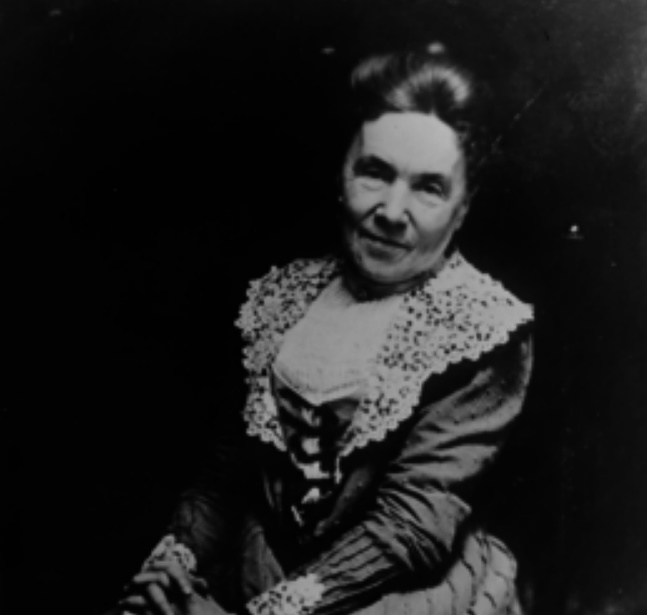
Laura Spelman Rockefeller -Photo: nl.wikipedia.org 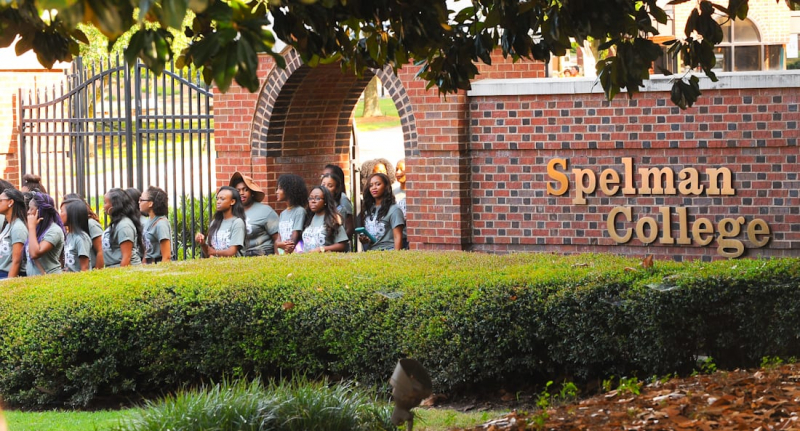
Spelman College -Photo: uncf.org -
One of the interesting facts about John Davison Rockefeller is that he started doing charity at the age of 16. Rockefeller's charitable contributions began with his first work as a clerk at the age of 16, when he donated 6% of his salary to charity, as documented in his personal ledger. By the age of twenty, his charitable contributions had surpassed ten percent of his income. The majority of his donations were to churches. His church was later linked with the Northern Baptist Convention, which was created after the American Civil War by American Baptists in the North with ties to their historic missions to establish schools and universities for freedmen in the South. As Rockefeller's wealth expanded, so did his charitable donations, which were mostly directed toward educational and public health programs, but also toward basic science and the arts.
In 1884, Rockefeller contributed significantly to the Atlanta Baptist Female Seminary for African-American women, which later became Spelman College. Before the Civil War, Rockefeller's in-laws, the Spelman's, were fervent abolitionists who were committed to assisting the Underground Railroad. The vision of the school impressed John Rockefeller, who paid off the institution's debt. Rockefeller Hall, Spelman's oldest existing building, is named after him. Rockefeller also contributed significantly to Denison University and other Baptist universities.
Under the leadership of William Rainey Harper, Rockefeller donated $80 million to the University of Chicago, transforming it from a modest Baptist college into a world-class institution by 1900. He also made a contribution to the American Baptist Foreign Mission Society for the establishment of Central Philippine University, the first Baptist and second American university in Asia, in 1905 in the mainly Catholic Philippines.
Rockefeller's General Education Board was established in 1903 to encourage education at all levels throughout the country. In keeping with the Baptists' past objectives, it was notably active in helping black schools in the South. Rockefeller also supported established eastern institutions such as Yale, Harvard, Columbia, Brown, Bryn Mawr, Wellesley, and Vassar.
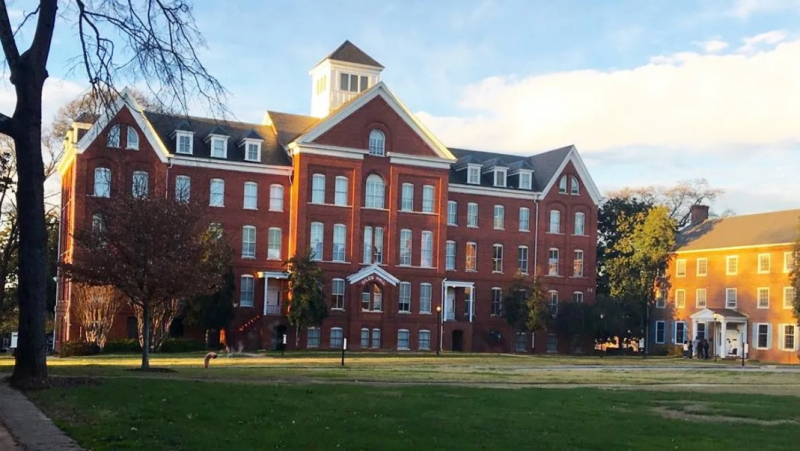
Spelman College -Photo: schoolflash.com.ng 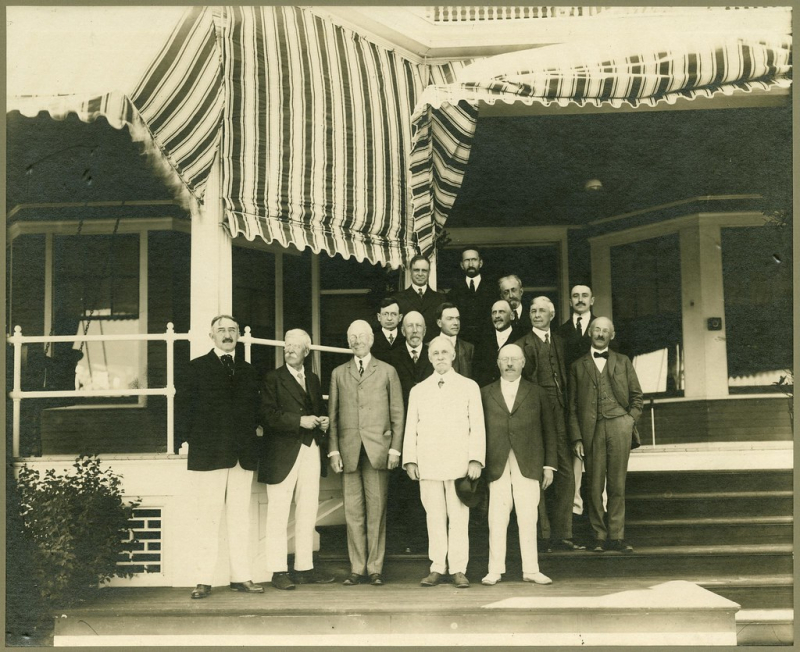
General Education Board Officers -Photo: flickr.com -
Rockefeller, on Gates' advice, became one of the first great donors of medical science. He established the Rockefeller Institute for Medical Research in New York City in 1901. After expanding its aim to include graduate study, it changed its name to Rockefeller University in 1965. It claims to be related to 23 Nobel laureates. In 1909, he established the Rockefeller Sanitary Commission, which successfully eradicated the hookworm illness, which had long afflicted rural areas of the American South. His General Education Board had a significant impact by supporting the Flexner Report proposals in 1910. The Carnegie Foundation for the Advancement of Teaching conducted the study, an excerpt of which was published in The Atlantic.
In 191, Rockefeller established the Rockefeller Foundation to continue and expand the work of the Sanitary Commission, which was abolished in 1915. He donated roughly $250 million to the foundation, which supported public health, medical education, and the arts. It provided the first of its kind to the Johns Hopkins School of Hygiene and Public Health. It also helped to establish the Peking Union Medical College in China as a renowned school. The foundation assisted in World War I war relief and hired Canadian William Lyon Mackenzie King to investigate industrial relations.
The Rockefeller Foundation financed a hookworm eradication campaign through the International Health Division in the 1920s. To achieve its goals, this campaign used a combination of politics and science, as well as teamwork between healthcare staff and government authorities.
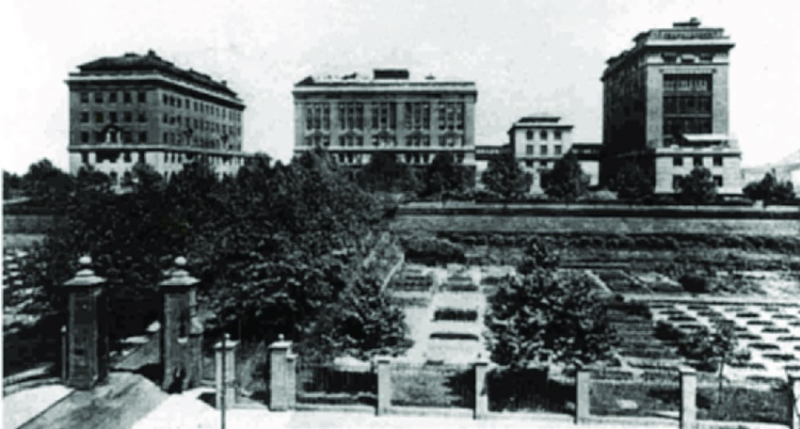
Rockefeller Institute -Photo: researchgate.net 
Rockefeller Foundation -Photo: archdaily.com -
One of the interesting facts about John Davison Rockefeller is that he is the richest individual in American business and economic history. Rockefeller is mostly recognized for the raw size of his riches. An audit in 1902 revealed that Rockefeller was worth around $200 million, compared to the total national GDP of $24 billion at the time. His fortune grew dramatically (in accordance with US economic expansion) as gasoline consumption surged, eventually reaching almost $900 million on the eve of World War I, with large interests in banking, shipping, mining, railroads, and other businesses. In 1913, his personal wealth was 900 million dollars, which is now worth 23.5 billion dollars with inflation in 2020.
According to his New York Times obituary, after Mr. Rockefeller resigned from business, it was estimated that he had accumulated close to $1,500,000,000 from the earnings of the Standard Oil trust and other investments. This was quite likely the most riches that any private citizen had ever amassed through his own efforts. By the time of his death in 1937, Rockefeller's remaining fortune, which was mostly locked up in permanent family trusts, was estimated to be $1.4 billion, compared to the whole national GDP of $92 billion. Rockefeller's net worth over the last decades of his life, according to some methods of wealth calculation, would easily place him as the wealthiest known person in recent history. No other American fortune, including those of Bill Gates and Sam Walton, comes close in terms of percentage of US GDP.
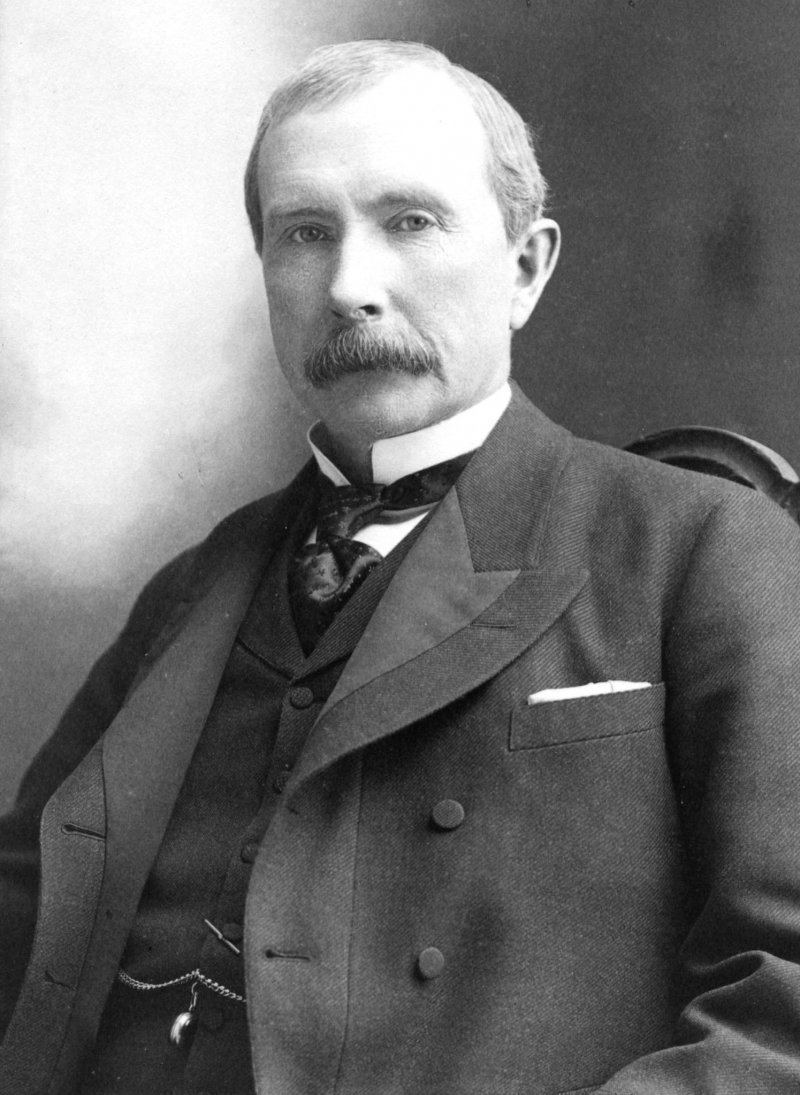
Photo: en.wikipedia.org 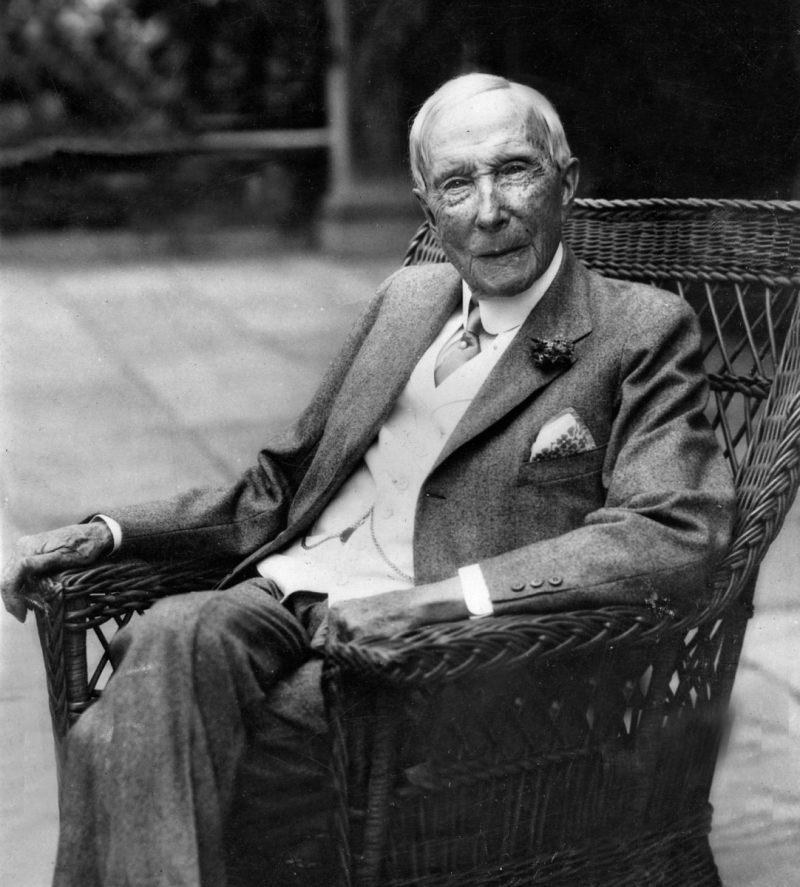
Photo: soapboxie.com -
It is an interesting fact that Rockefeller made hundreds of millions of dollars from the court-ordered dissolution of Standard Oil. Rockefeller and his son continued to consolidate their oil interests to the best of their abilities until New Jersey altered its incorporation laws in 1909, thereby allowing the trust to be recreated in the form of a single holding company. Rockefeller held his stock and retained his notional role as president until 1911. Finally, the United States Supreme Court ruled in 1911 that Standard Oil Company of New Jersey had violated the Sherman Antitrust Act. The trust still controlled 70% of the refined oil market but just 14% of the US crude oil supply at the time. The court determined that the trust was founded on illegal monopoly techniques and ordered its dissolution into 34 new companies.
Continental Oil, which became Conoco, which is now part of ConocoPhillips; Standard of Indiana, which became Amoco, which is now part of BP; Standard of California, which became Chevron; Standard of New Jersey, which became Esso, which is now part of ExxonMobil; Standard of New York, which became Mobil, which is now part of ExxonMobil; and Standard of Ohio, which became Sohio, which is now part of BP. Pennzoil and Chevron have remained independent corporations.
Rockefeller, who had rarely sold shares, owned more than a quarter of Standard's equity at the time of the split. He and the other stockholders were all given proportionate shares in each of the 34 firms. Rockefeller's authority over the oil sector was lessened as a result, but the breakup proved extremely beneficial for him over the next ten years. The aggregate net worth of the companies increased fivefold, while Rockefeller's personal wealth increased to $900 million.
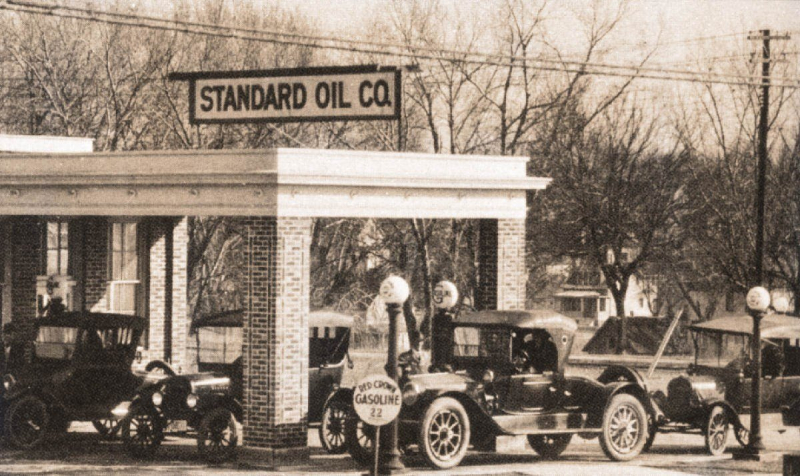
Photo: fee.org 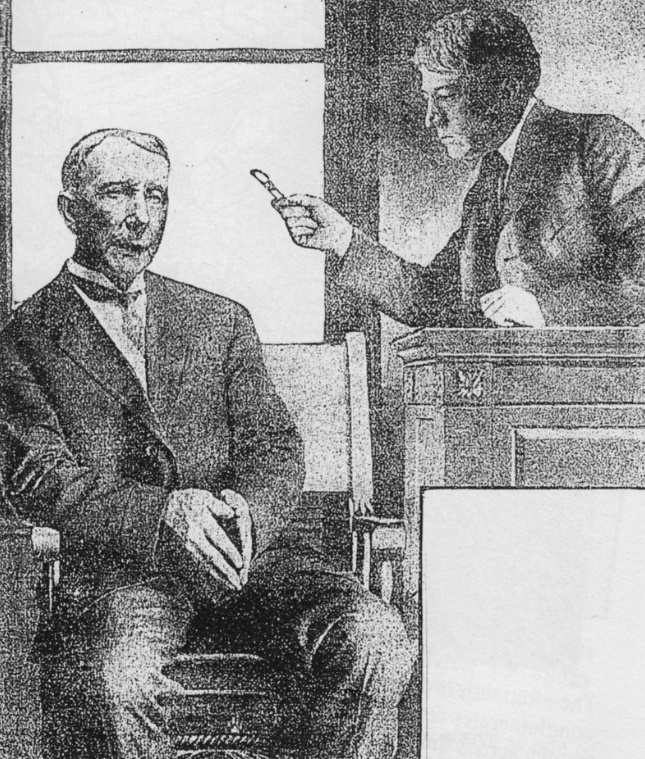
Photo: thereaderwiki.com -
Rockefeller developed moderate depression and digestive problems in his 50s, and he also suffered from alopecia, or the loss of some or all body hair, during a stressful period in the 1890s. Hair loss, commonly known as alopecia or baldness, is the loss of hair from one or more areas of the head or body. At least the head is usually involved. Hair loss can vary in intensity from a small area to the entire body. By 1901, he was wearing toupées, and by 1902, his mustache had vanished. His hair never grew back, but his other health issues improved when he reduced his workload.
On May 23, 1937, less than two months before his 98th birthday, Rockefeller died of arteriosclerosis at "The Casements," his home in Ormond Beach, Florida. The Casements is a mansion in Ormond Beach, Florida, United States, best known as the holiday home of American oil magnate John D. Rockefeller. The city of Ormond Beach currently owns it and uses it as a cultural center and park. It is located within the city boundaries on a barrier island overlooking the Halifax River, which is now part of the Florida Intracoastal Waterway.
He was laid to rest in Cleveland's Lake View Cemetery. Lake View Cemetery is a privately owned, nonprofit garden cemetery in the Ohio communities of Cleveland, Cleveland Heights, and East Cleveland. The cemetery, which was founded in 1869, was popular with wealthy families during the Gilded Age, and it is now recognized for its numerous elaborate funerary monuments and mausoleums.
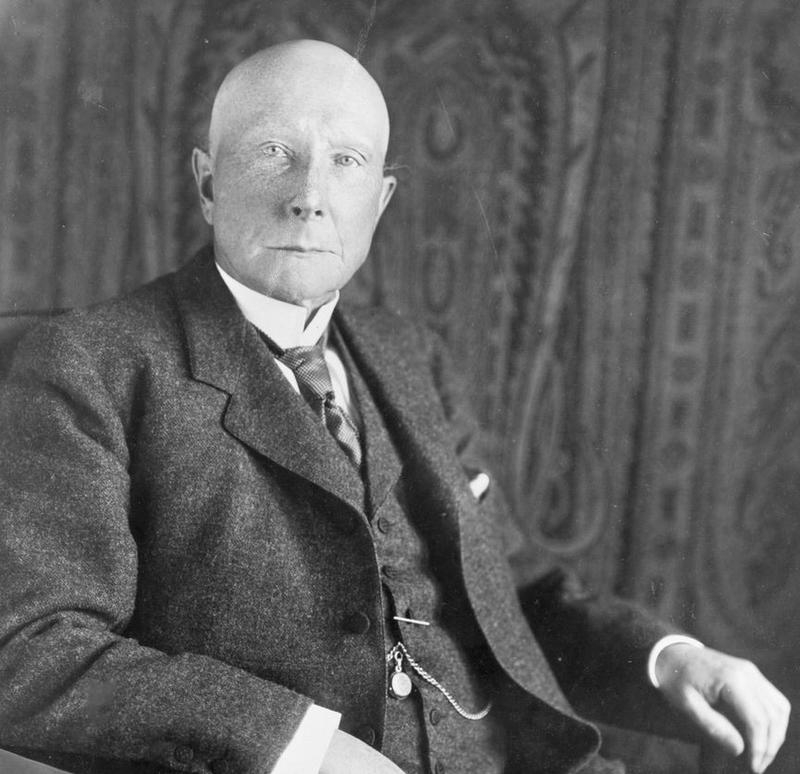
Photo: historydaily.org 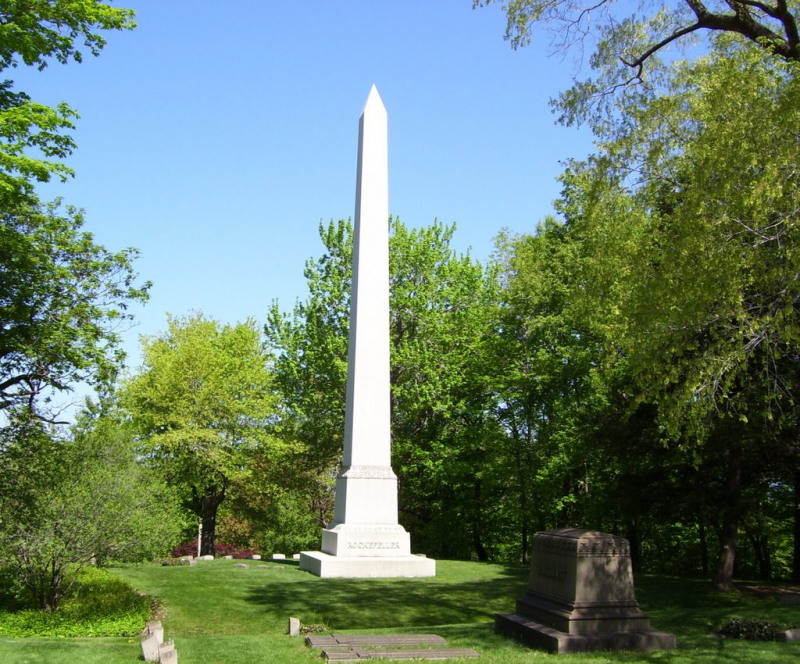
John Rockefeller grave -Photo: mapio.net














